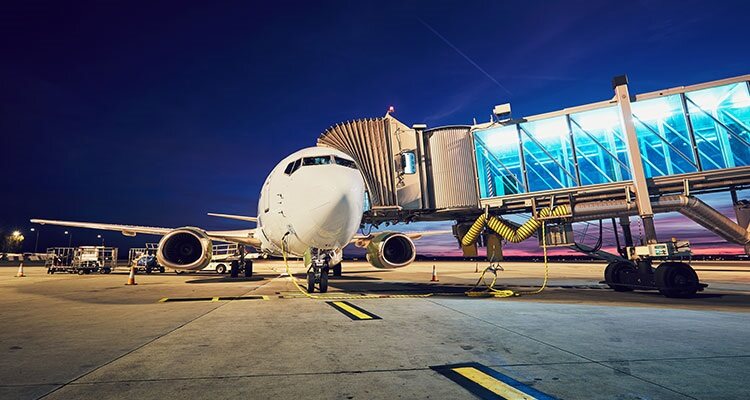Revolutionizing the transportation industry through data-driven innovation
The transportation and logistics industry is in the midst of a digital revolution, fueled by an increasing demand for greater operational efficiency and new emerging technologies. Research by Adroit Market Research revealed statistics suggesting that the global market size for digital transformation in transportation and logistics is revving up from $54.92 billion to $145.28 billion between 2018 and 2025. This surge highlights the industry’s recognition of the need to harness technology to stay competitive and meet the ever-growing demands of the modern world. But what would a digitalized transportation sector look like and how do we get there?
Picture this: cities and countries connected by smart public transportation systems driven by AI decision tools that

leverage real-time data analytics. Complex logistics operations are streamlined through a single digital management platform which among other things identifies in real-time the most efficient route and automates manual tasks. But as with any journey, there are bound to be bumps in the road. Legacy technologies, for example, make it tricky to implement modern IT systems and stubborn data silos, which can make interconnectivity challenging. To harness the promise of data-driven innovation in transportation, the industry needs to tackle these challenges head-on.
Digital solutions are already making great headway in the transportation space, from innovative commuter apps to real-time total management IT solutions, making transport hubs, such as airports a unified ecosystem. These examples have one thing in common. Data.
Data-driven innovation: fueling the future
If fully leveraged, data can serve as the fuel propelling the digitalization of transport and logistics. From enabling real-time tracking and predictive analytics to AI-driven decision support systems, data holds the potential to drive innovation across the industry.
For instance, consider the case of Union Pacific, a rail operator employing predictive analytics and AI algorithms to monitor the health of its railway infrastructure. By analyzing data streams from sensors, historical maintenance records and previous track inspections, AI algorithms can anticipate potential failures, proactively schedule maintenance and avert costly disruptions to rail services. This exemplifies how AI enhances the precision of data-driven insights and increases operational efficiency significantly.
AI has made it possible to not only collect vast amounts of ongoing and historical data but also analyze it alongside external real-time datasets, such as capacity and weather conditions. This integration empowers operators to enact real-time changes and formulate informed strategic decisions. Take the case of Copenhagen Airport’s data management journey, which has made the airport a big data powerhouse. The airport overhauled its existing complex systems with one real-time total airport management solution, creating a unified data ecosystem across its operations. The software behind the platform integrates over 100 functions within the airport to create a single source of truth to empower decisions and for staff to act on.
Analyzing these data patterns is not only crucial in achieving higher operational efficiency but also in increasing reliability and punctuality across transportation. For instance, Transport for London (TfL) harnesses data analytics to optimize the operation of its underground tube service. By dissecting data from train sensors, ticketing systems, and passenger flow sensors, TfL identifies bottlenecks and fine-tunes train schedules to cater to the needs of millions of passengers daily.
On the operational side of the coin, logistics giants like DHL and UPS are also embracing AI-powered tools to optimize their operations. Leveraging existing data on shipment volumes and delivery routes, algorithms can compute freight scheduling, reduce empty miles, improve overall supply chain efficiency and ultimately improve customer satisfaction. Whilst it’s clear the industry is making great strides, there are a range of challenges the transportation and logistics industry will face if it is to reach its full digital potential.
 Bridging the data gap: overcoming the roadblocks
Bridging the data gap: overcoming the roadblocks
The benefits of data-driven innovation are clear, but collecting, sharing and utilizing the data across operations isn’t an easy task. Legacy technologies, disparate systems and data silos can make it challenging to effectively data share and collaborate. So how does the industry go about overcoming these roadblocks?
Like many other sectors, the transportation industry was not originally built for digital, resulting in many modes of transport relying on outdated systems which have not kept pace with technological advancements. To bridge the data gap, legacy systems need to be transformed and modernized. Whilst this requires investment in modern IT systems it does not always require a complete overhaul. By adopting a phased approach and identifying integration points, it is possible to modernize whilst maximizing the value of existing legacy systems.
Another way to bridge the data divide and ensure greater connectivity through transportation systems is for transportation organizations to start adopting a highly modular system consisting of flexible components which function independently and communicate with each other through interfaces. A modular system design allows for greater flexibility as it can adapt to changing requirements, environments or technologies by replacing, adding or removing modules without affecting the rest of the system making continuous updates less constrained.
Bringing the wider ecosystem on the journey
The benefits of data-driven innovation extend beyond transportation companies to the wider population and community. Embracing data sharing can pave the way for not only increased operational efficiencies, minimized disruptions and therefore a greater ROI but also a more personalized and reliable passenger experience, leading to higher customer satisfaction. The next step for the transportation industry is a focus on reducing environmental impact, and data-driven innovation will be essential in achieving this. Whilst optimized routes and fuel-efficient operations are the beginning this is only the tip of the iceberg of how digitalization can evolve the transportation sector to become more connected and sustainable in the future.
There is no doubt the transportation sector will continue to evolve as new technologies emerge, but if the sector is to fully leverage the potential that technology holds it needs to harness the power of data in its operations. Transforming legacy technologies with modern IT, developing modular infrastructures and implementing AI-powered decision tools will revolutionize the way we transport people and goods for the better. Data-driven solutions enabled by collaboration and innovation can spur the transportation ecosystem to realize the full benefits of digital transformation, creating a new era of smart mobility.
For a list of the sources used in this article, please contact the editor.
Richard Davies
Richard Davies is Country Managing Partner UK of Netcompany. By leveraging technology and digitalization responsibly, it is Netcompany’s purpose to contribute to a modern and mature Europe that prioritizes democracy, justice, transparency, and social security. Its goal is to empower societies and citizens of Europe to stand independently and strongly, and to lead the way in shaping a better future for all.

 Bridging the data gap: overcoming the roadblocks
Bridging the data gap: overcoming the roadblocks